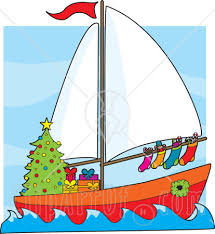I was crossing a very sensitive border, leaving the world's
nastiest dictatorship with a head full of intelligence and enough
hard proof to avert global disaster. It was all going so well and I
was almost over the line when a beefy officer with an enormous
Communist hat and an even larger moustache stepped out from behind
his kiosk and grabbed me by the shoulder.
"Is that a Gymboss in your pocket, or are you just happy to see me?"

A cold bead of sweat trickled slowly down my back. My head was
filled with an irritating loop of "Morning Train" by Sheena Easton
-- that was my mental conditioning kicking in, drilled into me so I
wouldn't panic in moments exactly like this.
I was busted and I had to think fast.
That border guard had eyes like a hawk. It was indeed a Gymboss in
my pocket, but I sure didn't want to admit it! He'd know I was
training TACFIT-style and the game would be up.
So what did I do?
I swallowed my pride and batted my eyelashes.
"Why yes officer, I AM happy to see you..."
It was a blow to my pride -- a Gymboss doesn't exactly make an
imposing silhouette -- but it bought me some time. They marched me
into a customs shed, and when they turned their backs to close the
door I picked up a heavy oak desk, pressed it over my head, and
hurled it at them.
The force of the desk took down all three guards. That thing was
solid! I would never have budged it if I hadn't spent those
precious three weeks between missions building functional muscle.
I bolted out the door and sprinted across the border before they
had a chance to get up and pursue me. And I threw in some evasive
dodges, rolls and dives just in case... I bet that freaked them
out, cause everyone thinks "muscular" has to equal "muscle bound."
Sorry Comrade, but that simply isn't true.
Now I'm safe at home, sitting by the fireplace sipping a protein
shake -- shaken, not stirred -- and polishing my dumbbells. I've got
some downtime, and that means it's time to hone my skills.
Yeah, these TACFIT courses have been a lifesaver for my career. I
used to "muscle up" using bodybuilding style training. But after a
while I got so darn bound up that I repeatedly threw out my back
trying to answer my shoe phone. You should have heard the guys at Q
Branch laugh their pocket protectors off!
No, I need muscle that's as functional as it is impressive. I need
strength, power, size and agility to meet the demands of my crazy
life. I might be scuba diving in the morning, scaling the walls of
a fortress at noon, and playing baccarat in the Monte Carlo casino
that night. I swear sometimes the trunk of my Aston Martin looks
like I live in it.
TACFIT is just what the special branch ordered. It's no wonder all
the guys in my department are using it. At least those of us with
00-numbers.
This message won't self destruct like those fancy messages I get
from HQ, but the special deal on Mass Assault will!
Move fast like the wind, my friends. Move fast..... like the wind.
_______
Aside from the over the top advertising methods, I like and recommend using the Gymboss timer. Very versatile, compact, etc. I have also been doing the TacFit Commando workouts for the last 4 months or so, and feel they are a great way to focus your training time/methods. I recommend using two gymboss timers, one for the warm-up and cool-down phases (set for 6 rounds of 30 seconds with 30 seconds rest), and one for the Tabata portion. Train hard, train smart.



































